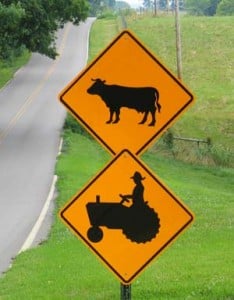
In a recent AFRBoss article, it was cited that an important trend over the next decade will be the shift from words to images in communication.
 When we were all young children, we all used to bug our parents with lots of "Why?" questions. And while this can test even the calmest of parents, the truth is children are curious about the world around them and want to understand why things happen. It helps them learn and communicate.
When we were all young children, we all used to bug our parents with lots of "Why?" questions. And while this can test even the calmest of parents, the truth is children are curious about the world around them and want to understand why things happen. It helps them learn and communicate.
Yet, somehow, as we get older, we forget the importance of why questions.
Recently, I went to a talk by Michael McQueen from NexGen Group. He believes that one of the top five mistakes that leaders make is that they pass on the 'how', but not the 'why'?
And the reason why this is a big mistake for most companies is that often company processes are perpetuated without people ever questioning why we do something. Over time, staff are taught processes that solve problems that no longer exist.
He then read us The Pot Roast story:
There was a young woman who moved out into her own house. While living at home, she never cooked. Upon the move, she returned home to learn how to cook a few dishes. One of her favorite recipes was Pot Roast. So she asks her mother to show her how to cook one.
The mother begins to share her expertise with the daughter. She tells her to salt and pepper the meat well. To make sure the vegetables are all cut the same size. Just before the mom places the roast in the pan, she picks up a knife and cuts about a ¼ of an inch of roast from each end. Then she places the meat in the pan.
The daughter stops her mom. “Mom, I understand why we cut the vegetables the same size – that way they’ll cook uniformly. And I know the reason we salt and pepper the meat all over – and rather heavily, is so the whole roast will absorb the flavor of the seasonings. But why did you cut a little bit off each end of the roast before you placed it in the pan?”
“Because that’s what you do”, said the mom.
“But why?”, questioned the girl.
“Does it help it cook better?”
“Well, I do it this way, because that’s the way my Mom taught me”, said the mother. “But I’m not really sure why we cut the ends off. Next time we go to visit we’ll ask her.”
Several months later the family gathers at Grandma’s house for dinner. As grandma prepares the meal the mother and daughter are in the kitchen with her. The daughter asks her grandmother, “Grandma, you’re such a good cook, and I know you passed all your methods on to Mom, but I can’t figure out why we cut the ends off of the pot roast before we cook it.” The grandmother turned to her granddaughter and said, “What are you talking about? I don’t cut the ends off before I cook it.” At this point the mother jumps into the conversation and says, “Yes you do! The time you showed me how to make pot roast, you started to put it in the pan, and then you put the roast back on the cutting board and cut about a 1/4 inch off each end of the roast. I’ve been doing it that way ever since”, she declared!
The grandmother stared at her daughter in amazement. “Every time you cook a pot roast you cut a ¼ inch off the ends? Every single time?” “Yes!” She answered her mother. “Every - single - time, just like you showed me.” “Honey, all I can say is you’ve been wasting a lot of good meat over the years. The only time I ever cut the ends off the roast is if it’s too big for the pan!”
In my role, I am given the opportunity to review new employee induction and procedural training manuals.
When I work on the training materials to write the training video script, I constantly add the "why" to procedures. And the interesting thing, is that when I ask a company why a process needs to be done in a particular way, they either realise that we either need to get rid of the process or that we can explain the process better.
Where in your company can you ask more ''why' questions to improve your processes?

In a recent AFRBoss article, it was cited that an important trend over the next decade will be the shift from words to images in communication.

One of the major frustrations of being a safety leader is that it's often difficult to get your safety messages understood and acted upon correctly.